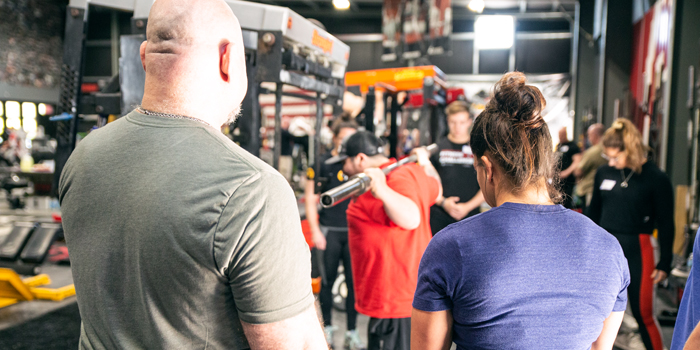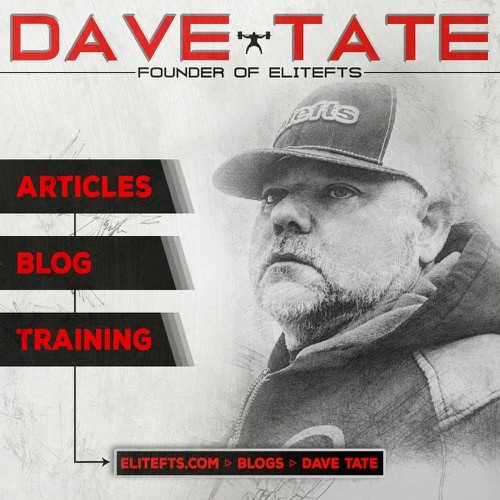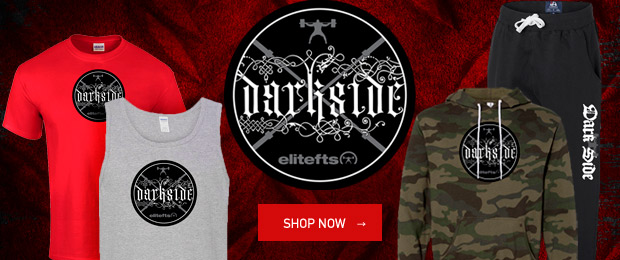
When training your lats for the bench, keep your grip medium to wide and focus on pulling with your elbows (not your hands).
If you're training your lats for the bench press, train with a full grip (straps or not, grab and squeeze with all fingers).
When you bench, try to push your body away from the bar, not the bar away from you.
A close grip (not so close you tear up your wrists or elbows) for triceps work will always work your bench better than a wide grip. The closer grip will have more effect on the muscles that actually press the bar.
For total triceps mass, you'll need to work both close and wide.
Close-stance safety bar low box squats will solve the majority (but not all) of falling-forward problems in the squat.
If you can't flex it then DON'T ISOLATE IT. You need to have control of your body if you're going to do isolation movements. If I asked you to flex your pecs, it'd probably be easy. You can make those boobies bounce with pride. Now what if I asked you to do the same with your triceps, delts, hamstrings, or lats? If you can't, why in the hell are you doing tight isolation bodybuilding cable work? Hmm... never thought of that one, did you? Stick with the presses and rows and build muscle first. You can't flex bone.
Grip work is very hard to recover from (more so for beginners), so keep it to one or two times per week. Once every four days is a better option.
To develop full biceps, make sure to use both wide and close grips.
When aiming for a bigger bench press, try "pulling the bar apart" as you press.
Keep your head back when you squat. There's no need to look for the great power gods in the sky. Just make sure your head is up and driven back into the bar. This will help keep the chest up.
When setting up for a conventional deadlift, line the bar up with the top of the quads. If you have bigger quads, the bar will be further from your shins. Keep in mind that this is a general guideline. Pull how you feel best.
If you don't know your foot position for a conventional deadlift and need a place to start from, try hanging from a chin bar and simply drop to the floor. Normally, where your feet land is your best pulling stance.
If you're trying to develop a stronger squat and deadlift, train your abs standing up.
Regardless of how you pull, try to get your body weight to fall backwards.
Try doing alternate dumbbell triceps extensions while keeping one dumbbell in the locked out position instead of at the bottom. This is one way to still work the triceps hard while using less weight and putting less strain on the elbows.
There are very few things that I've seen work when it comes to help with dropped deadlifts due to grip. Dumbbell holds, however, are one movement that's shown great results. Grab the top of a hex dumbbell, making sure that you don't touch the numbers. Grab, stand, and hold for as long as you can. If you can go over 20 seconds, up the weight.
Another movement that will help your grip for pulling is to use binder clips. These are the big paper clips that have a black end on them (and other colors). Use these like you would use grippers, but only use your thumb and little finger. You can work all fingers, but the little guy is the first to go. Ed Coan told me this one.
If you're dead set on overhead pressing but your shoulders hurt when you do them, try it with a reverse grip or neutral grip bar.
When benching, think of pushing through, pushing past the lock out.
If you have a hard time keeping your chest up in the squat, try moving your hands in and pulling your shoulder blades together.
If you can't "feel" your lats when you bench press and have problems with stability at the top, try doing your speed work with your legs straight in front of you with your heels on a milk crate. This is also very good for bottom end raw strength.










